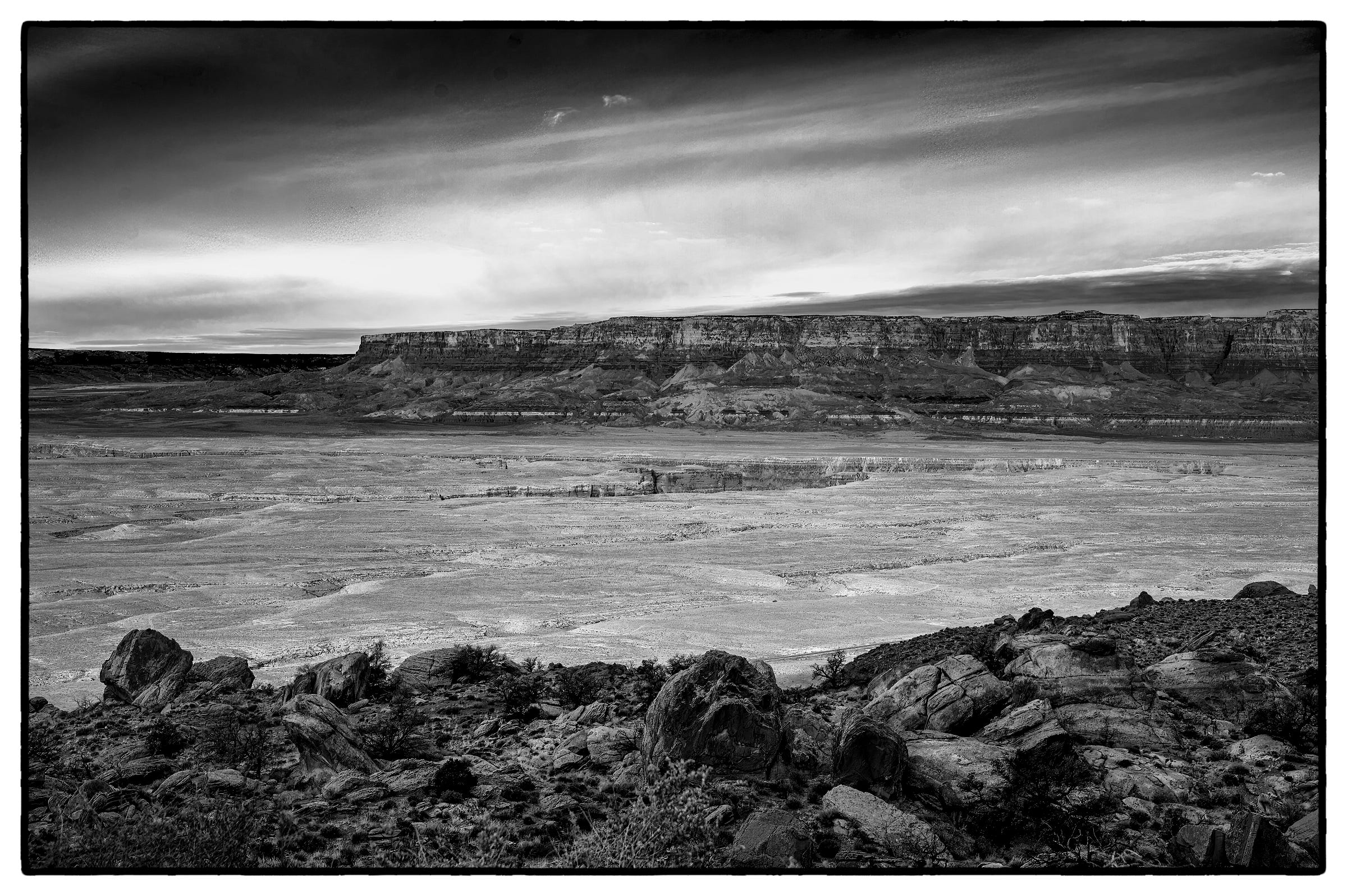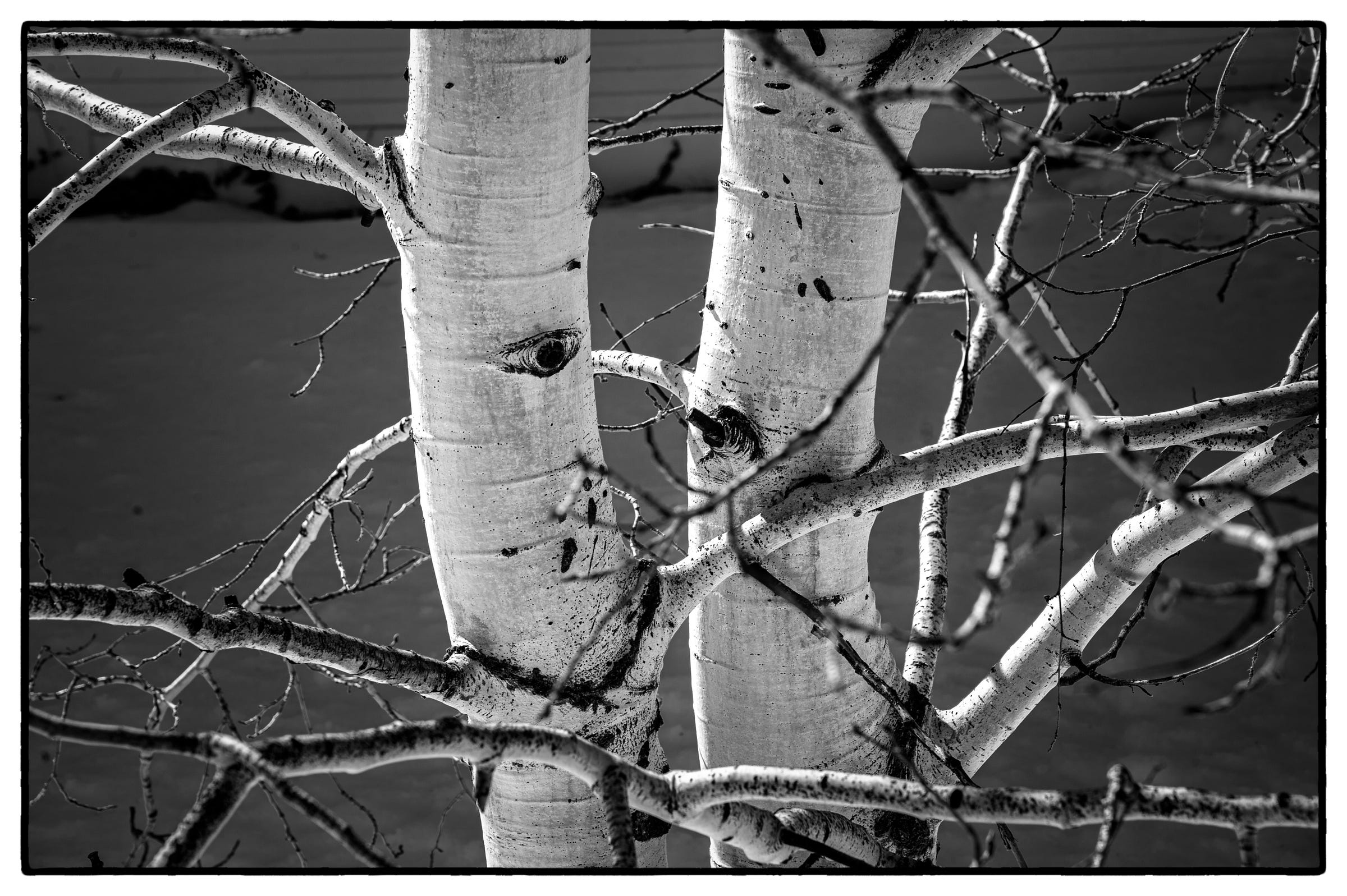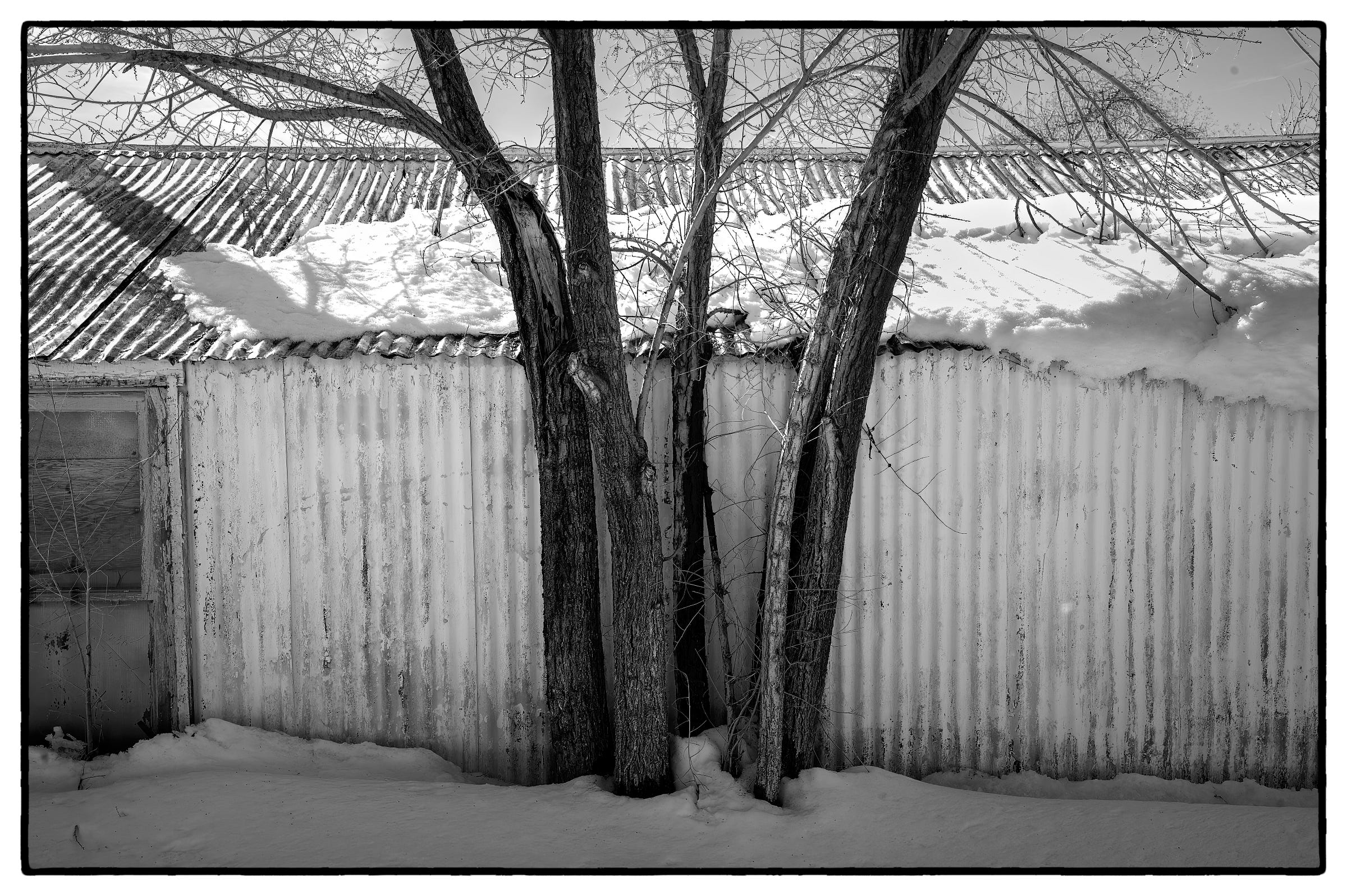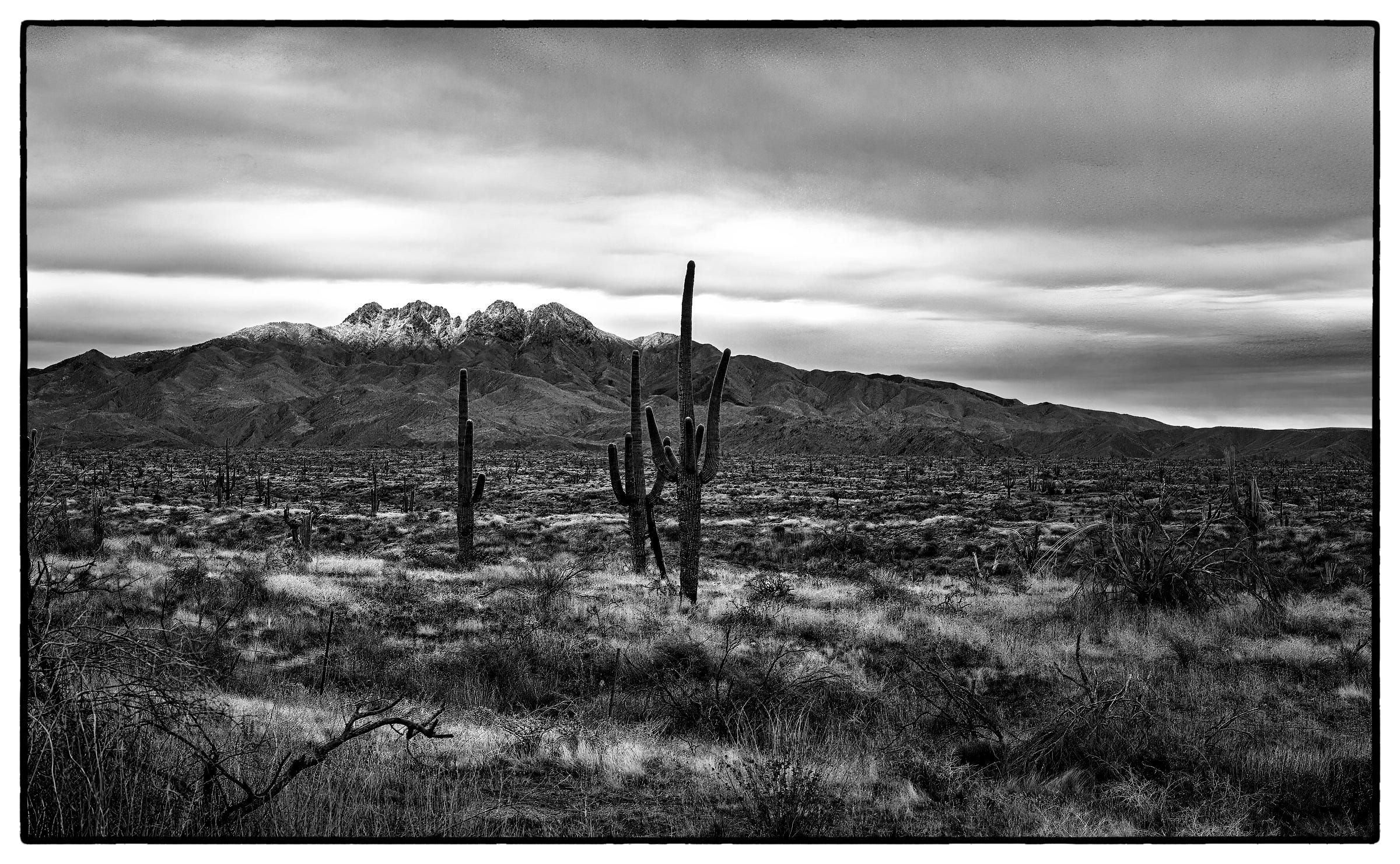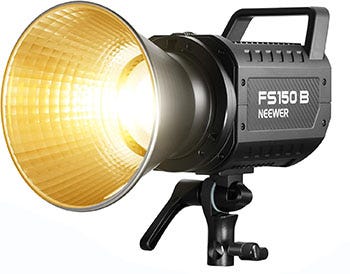The Land Remembers: Four Frames of Texture, Time, and Tenacity
Occasionally it is the quiet photographs that I enjoy the most.
I help photographers and creative entrepreneurs over 40 reclaim their confidence, cut through the noise, and build bold, independent lives through no-BS insight, experience, and action. Welcome to my Substack. I am glad you are here.
In today’s dispatch, I wanted to talk about the quiet images that I love to make. These black and white photographs were shot in color, of course, and converted to monochrome through post-processing. But it is important to know that when I shot them, I knew that I was going to make them black and white.
There is something timeless about a black and white image that I am reconnecting with more and more these days.
Perhaps it is the ubiquitous nature of color photography. I see it everywhere I go, whether online or in the real world. Or maybe it is because it reminds me of my roots, of those long nights in the darkroom with Sinatra or Miles, burning, dodging, toning, and then tossing the print and starting over.
Whatever it is, I am making a lot more monochrome images these days.
Sometimes I know the colors aren’t going to be that remarkable, as in the Aspen photo below. Or perhaps when the design or texture is more easily observed without the added confusion of color, like the image of the trees and tin shed.
Texture is time made visible.
This land remembers.
The earth keeps score. It records the wind, the rain, the time between storms.
You can see it in the rocks—those battered, blistered chunks of desert that refuse to smooth out. Every crack and crevice is a story with no ending, just layers.
This is Marble Canyon, looking out toward the Vermillion Cliffs.
The Colorado River is at the bottom, carving its way toward something bigger.
Between here and there is a gentle stillness.
But not the kind that sits quietly.
This stillness buzzes. It hums.
The flatness of the desert floor is a visual pause, a moment to breathe before the cliffs rise like punctuation.
What fascinates me isn’t the drama of the cliffs or the vastness of the space.
It was the rough ground right in front of me. The texture.
Those foreground rocks that lean in like they’ve been waiting for someone to listen.
This photo isn’t about scenery per se, it’s about presence.
It’s about how the earth keeps speaking long after we stop paying attention. The rocks and the cacti have a patience far greater than our own.
I didn’t shoot this for color, drama, or even a “wow” moment.
I shot it because I felt the weight of time pressing up through the rocks.
I shot it because I could almost hear it.
Stillness can feel tangled.
I made this image in Williams, Arizona, on a crisp January morning.
The air was quiet with the kind of cold that doesn’t bite, and reminds you to keep moving.
These trees weren’t moving. They were locked in place, as if tangled in an old conversation.
Aspens fascinate me.
That contrast: the smooth, pale bark against the dark scars and knots. In black and white, it’s even more stark—like someone stripped the noise out and left only structure and shadow.
What pulled me in this time was the tension.
The way these branches overlap and dodge each other.
The way they twist and reach, not in harmony, but in some seemingly temporary negotiation.
There’s no place to stretch out. Everything is touching something else.
These trees have weathered wind and ice side by side, and you can see it ion their bark
It carries scratches like stories and knots like eyes that have seen too much but will forever remain silent.
I stood there longer than I meant to.
Just watching.
Just listening.
My freezing cheeks reminded me to get the shot and get moving.
I don’t feel that my photographs are always about perfect composition or dramatic moments.
Some are simply about friction.
And about noticing the way life weaves itself into patterns and resistance, sometimes in the same breath.
Some things endure by leaning on friends.
I found this scene in Kanab, Utah in the middle of winter.
Bright, clear-sky morning, but the cold was still hanging around. You could hear it in the crunch of the snow and the utter silence between footsteps.
This shot wasn’t a dramatic find. It’s just a corrugated metal shed with a thin layer of snow pretending to be a roof.
But the textures are what caught my attention.
That rippled wall, rusted and tired.
The sagging snow, threatening to slide.
And the trees were wedged so tightly they almost felt like they grew there just to hold it all together.
There’s quiet resistance here.
Nothing heroic.
Nothing trying to impress.
Just things doing their job.
Metal holding shape.
Wood pushing up.
Snow not melting.
All of it balanced by compromise.
I believe that endurance and perseverance aren’t always loud.
Sometimes life’s just about showing up, weathered, cold, and leaning, but still standing.
Visually, the repetition was the core interest.
Vertical lines.
The grain of the bark echoing the ridges in the metal.
Even the shadow on the roof added to the rhythm.
But it’s the mood that stuck with me.
That tension between organic and industrial.
Growth and decay. Structure and slow collapse.
It’s not always beauty that compels us to make a photograph.
Sometimes it’s because it feels familiar.
This one does.
It feels like the back corner of a memory we don’t access often, but when we do, it’s still there.
Quiet.
Solid.
Possibly a little quirky.
The familiar can still surprise.
I’ve seen Four Peaks my whole life.
Out the windows.
In the car.
Always there.
Constangly on the horizon, no matter where I’ve lived in the Valley.
But this day seemed special.
Snow dusted the mountain overnight, just barely there.
A desert rarity.
Maybe once every couple of years, and you get a glimpse only if you’re lucky.
And that day, I was.
The saguaros in the foreground are old.
Maybe older than photography itself.
A fire had swept through a year or so ago, so the desert was stripped and scarred, but the saguaros held their ground.
That’s what they do.
They stand.
They reach.
They remember.
There’s something about this scene that feels like a reunion.
The kind where everyone’s changed just enough to notice.
The desert, burned but alive.
The mountain, softened by snow.
Even the light seemed different.
Cautious, as if it was holding its breath.
And then there’s me.
Camera in hand, boots in soot, watching the mountain I’ve always known wear something unfamiliar.
Beautiful.
Temporary.
Fragile.
It was a moment where past and present collided—burnt earth below, winter grace above.
In reality, nothing lasts here for long.
Not the fire.
Not the snow.
Not even the moment.
But the saguaros remain, arms raised like memory markers.
I’ve photographed this mountain dozens of times.
But this seemed like a first for some reason.
Your Turn: Make a Quiet Image
We live in a world obsessed with loud visuals.
Bold colors, perfect light, spectacle.
But what happens when you aim your camera at something quiet?
Try this:
Go out with no agenda.
Let texture lead.
Look for the overlooked.
The almost-gone.
The almost-silent.
Photograph something that doesn’t need to shout.
Then ask yourself:
What does this image remember?
Not what you remember—what it does.
If you make something that sticks with you, I’d love to hear about it.
I hope you enjoyed this week’s dispatch.
Next week, we will look at artist mindsets you can use to jumpstart your creativity.
Upcoming Workshop: Creative Still-Life Photography
August 2025.
Interesting Links:
lensculture PORTRAIT AWARDS 2025 (LINK)
PROMPT Prompts (LINK)
Gear I Like.
NEEWER FS150B LED Video Light
Book Recommendation:
Saul Leiter: The Centennial Retrospective
If you’re over 40 and still hungry to make, build, and create, stick around. This space is for people who aren’t done yet (and never will be). I’ve got five decades of wins, failures, comebacks, and creative battles under my belt, and I’m sharing everything that still works—and burning the rest.
No fluff.
No hustle porn.
Just real tools for building a creative life on your own damn terms.




